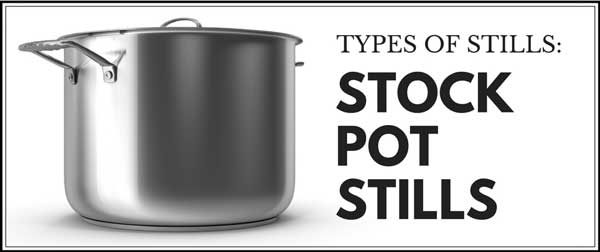Types of Stills Series: Stock Pot Still

Despite the name "moonshine still," this equipment can be used to distill many different substances, including essential oils and water. By definition, “moonshine” is any type of alcohol that is produced illegally, yet moonshine stills can be used to distill water, vinegar, essential oils, legally-produced alcohol, and more. The name is just something that has stuck around from years ago because these types of stills can and have been used to distill—you guessed it—moonshine! There are many different types of moonshine stills, such as pot stills, alembic stills, reflux stills, and Column Stills, and you’ll find information about many of these below.
Stock Pot Stills
Stock pot stills are popular designs for moonshine stills because they can be assembled from household items that are relatively inexpensive to buy. However, this type of distiller is not the safest to use for two reasons:
- You don’t have control over what you’re collecting, so you can’t easily dispose of methanol or foreshots. Methanol has long been a concern in making moonshine due to its negative health effects, which is a substantial reason why distillation using a stock pot still is not recommended.
- The second safety issue with this type occurs when you are actually boiling your mash and operating the still. There’s nowhere to put a thermometer so you can’t read the vapor temperature, and you can’t open the lid while you boil your wash. Plus, the stock pot still system isn’t sealed, which means the hot vapors can easily escape, especially if you’re not using enough ice to condense the vapor that is being produced. Throw in the fact that alcohol vapor is highly flammable and the possibility of an open flame, and using a homemade stock pot still could become a recipe for disaster. Always keep a fire extinguisher handy!
Some people confuse stock pot stills with Alembic distillers because both can be used on the stove top and both can use stock pots, but the difference between the two lies in how they function. We’ll explore the Alembic design in part 2 of this blog series.








Comments